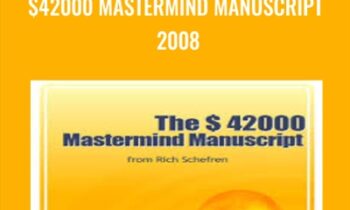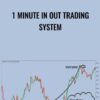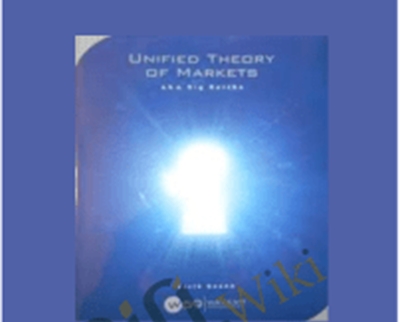-
×
 PinFlux Pro Version - Gets you 100% FREE Traffic From Pinterest Pin Flux
1 × $57.00
PinFlux Pro Version - Gets you 100% FREE Traffic From Pinterest Pin Flux
1 × $57.00 -
×
 Affiliate Marketing Secrets - Iman Shafiei
1 × $91.00
Affiliate Marketing Secrets - Iman Shafiei
1 × $91.00 -
×
 "Fix My Job" binaural mantra meditation for attracting work you love - Michael Davis Golzmane
1 × $17.00
"Fix My Job" binaural mantra meditation for attracting work you love - Michael Davis Golzmane
1 × $17.00 -
×
 Proven Fall Prevention Strategies: Exercise, Meds Management and Home Modification - Trent Brown
1 × $40.00
Proven Fall Prevention Strategies: Exercise, Meds Management and Home Modification - Trent Brown
1 × $40.00 -
×
 10x Launches - Copy hacker - Ry Schwartz
1 × $92.00
10x Launches - Copy hacker - Ry Schwartz
1 × $92.00 -
×
 ‘The Iceman’ 10-Week Video Course – Wim Hof Method
1 × $35.00
‘The Iceman’ 10-Week Video Course – Wim Hof Method
1 × $35.00 -
×
 3 Day Advanced Mindfulness Certificate Course - Donald Altman
2 × $204.00
3 Day Advanced Mindfulness Certificate Course - Donald Altman
2 × $204.00 -
×
 Emerging Adults: Clinical Strategies to Gain Independence, Defeat Anxiety and Succeed in the Real World - Kimberly Morrow & Elizabeth DuPont Spencer
1 × $34.00
Emerging Adults: Clinical Strategies to Gain Independence, Defeat Anxiety and Succeed in the Real World - Kimberly Morrow & Elizabeth DuPont Spencer
1 × $34.00 -
×
 $42000 Mastermind Manuscript 2008 - Rich Schefren
1 × $23.00
$42000 Mastermind Manuscript 2008 - Rich Schefren
1 × $23.00 -
×
 iOS 13 & Swift 5 - The Complete iOS App Development Bootcamp - Dr. Angela Yu
1 × $38.00
iOS 13 & Swift 5 - The Complete iOS App Development Bootcamp - Dr. Angela Yu
1 × $38.00 -
×
 CBT Toolbox for Children and Adolescents
1 × $84.00
CBT Toolbox for Children and Adolescents
1 × $84.00 -
×
 Pain Management in the Elderly - Steven Atkinson
1 × $35.00
Pain Management in the Elderly - Steven Atkinson
1 × $35.00 -
×
 Adam Short - Niche Profit Full Control
1 × $132.00
Adam Short - Niche Profit Full Control
1 × $132.00 -
×
 Grow with Quizzes - Chanti Zak
1 × $193.00
Grow with Quizzes - Chanti Zak
1 × $193.00 -
×
 Dr. Joseph Riggio - Million-Dollar High-Ticket Groups & Programs 2.0
1 × $124.00
Dr. Joseph Riggio - Million-Dollar High-Ticket Groups & Programs 2.0
1 × $124.00 -
×
 Ben Adkin - The Trial Formula
1 × $24.00
Ben Adkin - The Trial Formula
1 × $24.00 -
×
 2013 MozCon Video Bundle - SEOmoz
1 × $59.00
2013 MozCon Video Bundle - SEOmoz
1 × $59.00
You may be interested in…
-
Add
 1 Minute In Out Trading System
1 Minute In Out Trading System
$27.00Original price was: $27.00.$23.00Current price is: $23.00. -
Add
![[$10] EDUmobile Academy - Premium Course Bundle](data:image/svg+xml,%3Csvg%20viewBox%3D%220%200%20100%20100%22%20xmlns%3D%22http%3A%2F%2Fwww.w3.org%2F2000%2Fsvg%22%3E%3C%2Fsvg%3E) [$10] EDUmobile Academy - Premium Course Bundle
[$10] EDUmobile Academy - Premium Course Bundle
$554.00Original price was: $554.00.$83.00Current price is: $83.00. -
Add
 $300 a day YouTube Affiliate Marketing Blueprint - Hunter Edwards
$300 a day YouTube Affiliate Marketing Blueprint - Hunter Edwards
$147.00Original price was: $147.00.$43.00Current price is: $43.00. -
Add
 $100K Academy – Charlie Brandt
$100K Academy – Charlie Brandt
$597.00Original price was: $597.00.$63.00Current price is: $63.00. -
Add
 “Done-For-You” Client-Attraction Teleseminar Package – Michelle Schubnel
“Done-For-You” Client-Attraction Teleseminar Package – Michelle Schubnel
$597.00Original price was: $597.00.$80.00Current price is: $80.00.

 Affiliate Marketing Secrets - Iman Shafiei
Affiliate Marketing Secrets - Iman Shafiei  "Fix My Job" binaural mantra meditation for attracting work you love - Michael Davis Golzmane
"Fix My Job" binaural mantra meditation for attracting work you love - Michael Davis Golzmane  ‘The Iceman’ 10-Week Video Course – Wim Hof Method
‘The Iceman’ 10-Week Video Course – Wim Hof Method  Emerging Adults: Clinical Strategies to Gain Independence, Defeat Anxiety and Succeed in the Real World - Kimberly Morrow & Elizabeth DuPont Spencer
Emerging Adults: Clinical Strategies to Gain Independence, Defeat Anxiety and Succeed in the Real World - Kimberly Morrow & Elizabeth DuPont Spencer  $42000 Mastermind Manuscript 2008 - Rich Schefren
$42000 Mastermind Manuscript 2008 - Rich Schefren  iOS 13 & Swift 5 - The Complete iOS App Development Bootcamp - Dr. Angela Yu
iOS 13 & Swift 5 - The Complete iOS App Development Bootcamp - Dr. Angela Yu  Adam Short - Niche Profit Full Control
Adam Short - Niche Profit Full Control  Grow with Quizzes - Chanti Zak
Grow with Quizzes - Chanti Zak  Dr. Joseph Riggio - Million-Dollar High-Ticket Groups & Programs 2.0
Dr. Joseph Riggio - Million-Dollar High-Ticket Groups & Programs 2.0  Ben Adkin - The Trial Formula
Ben Adkin - The Trial Formula 
![[$10] EDUmobile Academy - Premium Course Bundle](https://utralist.com/wp-content/uploads/2021/05/EDUmobile-Academy-Premium-Course-Bundle-100x100.jpg)






 Purchase this course you will earn
Purchase this course you will earn 




